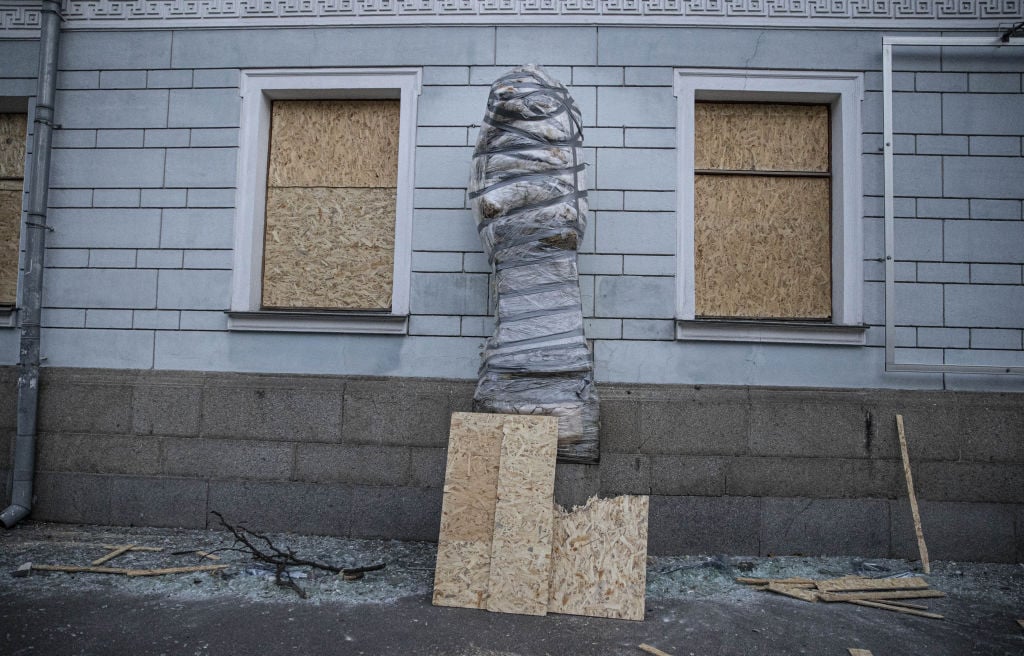
As a series of missile attacks on Monday, October 10, rained down on at least 10 Ukrainian cities, Ukraine’s culture minister, Oleksandr Tkachenko, wrote on Twitter that the Russian strikes had damaged several cultural institutions in Kyiv.
The Taras Shevchenko Museum, a museum dedicated to the late 19th century Ukrainian poet, was damaged, alongside the Khanenko art museum and the building that houses the country’s philharmonic orchestra, according to the culture minister. Ukraine’s deputy head of the president’s office, Kyrylo Tymoshenko, also claimed in a Telegram post that the Khanenko Museum in the center of Kyiv had been targeted in the early morning attacks.
The Khanenko Museum, whose official name is The Bohdan and Varvara Khanenko National Museum of Arts, is home to one of the largest collections of European, Asian, and ancient art in the country. The collection itself has been secured since the Russian invasion began on February 24. On Tuesday morning, the museum confirmed on social media that some of its windows have been blown out and were being repaired, and that further damages are still being assessed.
The Taras Shevchenko Museum also posted on its social media on Tuesday morning, confirming damage to its building, which dates back to 1841, including windows of the first and second floors. The institution said it was still assessing the overall damage, which it said “is quite significant.”
Ukrainians are waiting in bomb shelters and underground train stations as air raid sirens blare for a second day on Tuesday, October 11. At least eight people have reportedly been killed and 36 injured in widespread strikes from Russia that have largely targeted civilian areas, according the country’s state emergency service.
It’s not the first time Russian attacks have hit Ukrainian cultural institutions. In February, a museum in Ivankiv dedicated to the beloved folk artist Maria Prymachenko was partially burned down and destroyed, resulting in a loss of 25 paintings by the artist. At the time, the Ukrainian ministry of foreign affairs decried the attacks, referring to her works as “world-famous masterpieces,” which led Ukraine’s culture minister to ask that UNESCO revoke Russia’s membership.
As of September, UNESCO has verified damage to 196 sites since the invasion began in February. By its count, 82 religious sites, 13 museums, 37 historic buildings, 36 buildings dedicated to cultural activities, 18 monuments, and 10 libraries have been affected. In its last update in September, the Ukrainian culture and information policy ministry had reported more than 500 cases of destruction or damage at cultural heritage sites.
Attacks on the country’s cultural heritage have also led to increased looting. Peter Doroshenko, the newly appointed director of New York’s Ukrainian Museum, who recently launched an assistance program called SAFE, told Artnet News that a number of “artifacts have somehow appeared on the black market or in museums in Moscow,” but with the deteriorating security situation, it is difficult to evaluate much less known precisely how much of the country’s heritage has been destroyed or looted.
Odesa, which was subject to air raid sirens Tuesday morning, according to the New York Times, has officially applied with UNESCO for World Heritage Status.